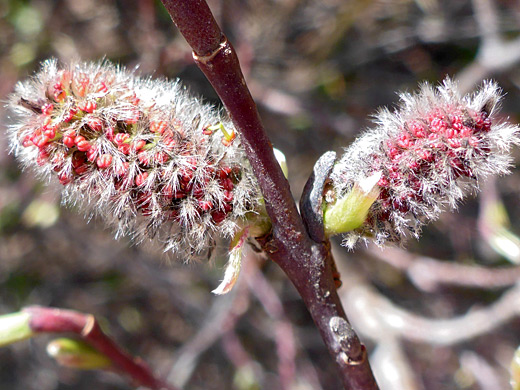Common name:
Plainleaf willow
Family:
Scientific name:
Salix planifolia
Main flower color:
Range:
The Rocky Mountain states, and scattered areas to the west
Height:
Up to 30 feet
Habitat:
Riverbanks, streamsides, wet meadows, bogs, seeps, from near sea level to 13,000 feet
Leaves:
Narrowly oblong to elliptic, up to 2 inches long, on grooved stalks of up to 0.4 inches. Shiny above, glaucous below
Season:
May to June
In most of the West, Salix planifolia is a high elevation species, found in a variety of mountainous habitats; its range extends to Canada and Alaska, and it occurs progressively closer to sea level further north. Plants vary greatly in height depending on the environment, from less than 1 foot to over 30. Young twigs are dark purple to nearly black; older branches are light grey. Leaves, appearing after the flowers, are usually entire, with shiny, dark green upper surfaces, and grey-green below, glabrous or finely hairy. Leaves have lighter-coloured venenation, the side veins not quite reaching the margin.
Staminate flowers have greenish filaments and red-purple anthers, later turning yellow, and a covering of silky white hairs, longer than the stamens. Pistillate flowers are bright green, ascending, in a cluster of 3 inches, around twice as long as the staminate catkins.
Staminate flowers have greenish filaments and red-purple anthers, later turning yellow, and a covering of silky white hairs, longer than the stamens. Pistillate flowers are bright green, ascending, in a cluster of 3 inches, around twice as long as the staminate catkins.
All Contents © Copyright The American Southwest | Comments and Questions | Contribute | Site Map




